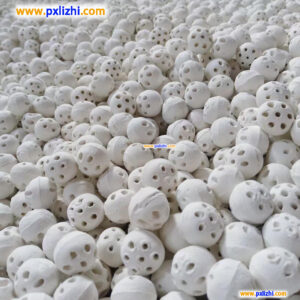
The Ultimate Guide to Inert Ceramic Balls: Benefits, Applications, and Selection Tips
Inert ceramic balls are indispensable components in numerous industrial processes. These high-purity, chemically inert spheres serve as essential bed support media, catalyst carriers, and packing materials across various sectors. Their unique properties make them ideal for applications requiring thermal stability, corrosion resistance, and mechanical strength.
Exceptional Thermal and Chemical Resistance
Manufactured from high-alumina content materials, inert ceramic balls withstand extreme temperatures up to 1800°C while maintaining structural integrity. Their non-reactive nature makes them perfect for corrosive environments where metal components would rapidly deteriorate.
Primary Industrial Applications
Petrochemical and Refining Operations
In refinery reactors, these balls protect catalyst beds from contamination while ensuring optimal gas distribution. Their uniform size and shape prevent channeling, maximizing process efficiency in catalytic reforming and hydrotreating units.
Environmental Protection Systems
Air pollution control systems utilize inert ceramic balls as catalyst supports in SCR units, effectively reducing nitrogen oxide emissions from industrial exhaust streams.
Selection Criteria for Optimal Performance
Choosing the right inert ceramic balls requires careful consideration of several factors:
Size and Crushing Strength: Select ball diameters based on reactor dimensions and operating pressure. Higher alumina content typically provides greater mechanical strength.
Temperature Requirements: Standard balls perform well up to 1400°C, while high-alumina variants excel in ultra-high temperature applications.
Chemical Compatibility: Verify material composition matches your process media to prevent unexpected reactions or degradation.
Frequently Asked Questions
What distinguishes inert ceramic balls from active alumina balls?
Inert ceramic balls are chemically non-reactive, serving primarily as structural supports, while active alumina balls possess adsorption capabilities for drying and purification processes.
How often should inert ceramic balls be replaced?
With proper operation, these balls typically last 2-5 years. Regular inspections during catalyst changeouts help assess replacement needs.
Optimize Your Process Today
Ready to enhance your industrial operations? Discover premium quality inert ceramic ball solutions tailored to your specific requirements. Our technical experts provide comprehensive support from selection through implementation.
Contact our engineering team for personalized recommendations and competitive pricing on bulk orders. Transform your process efficiency with reliable ceramic bed support media designed for maximum performance and longevity.